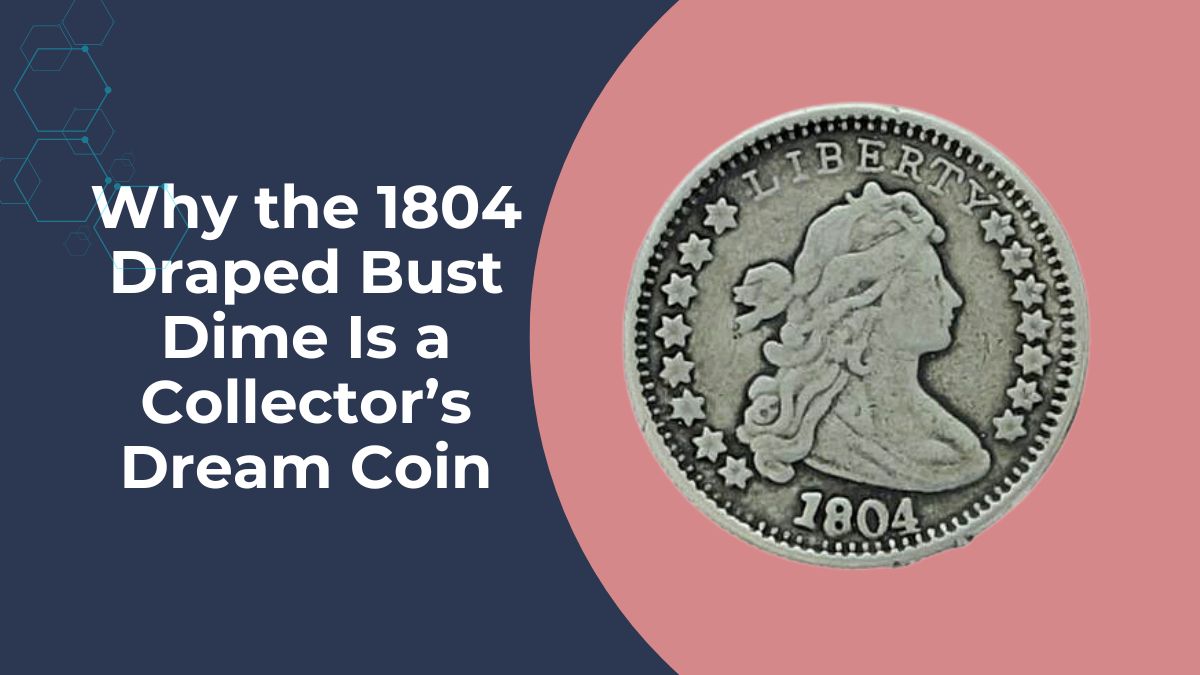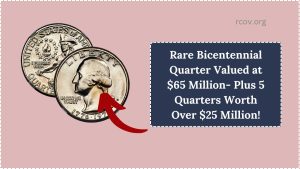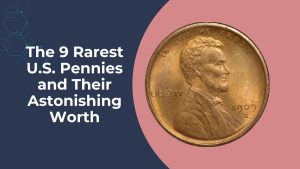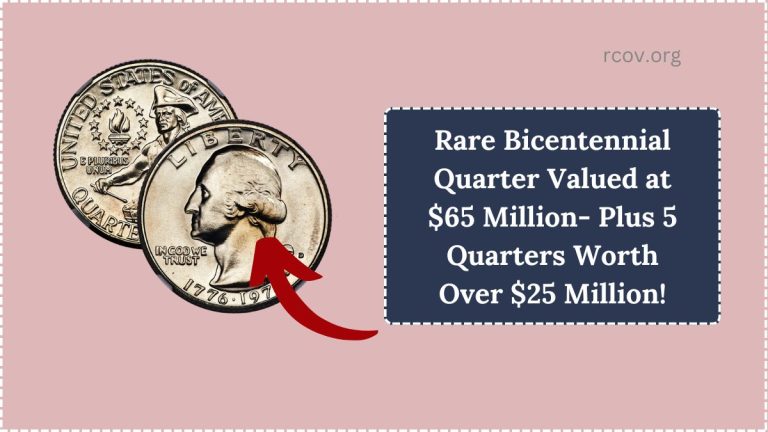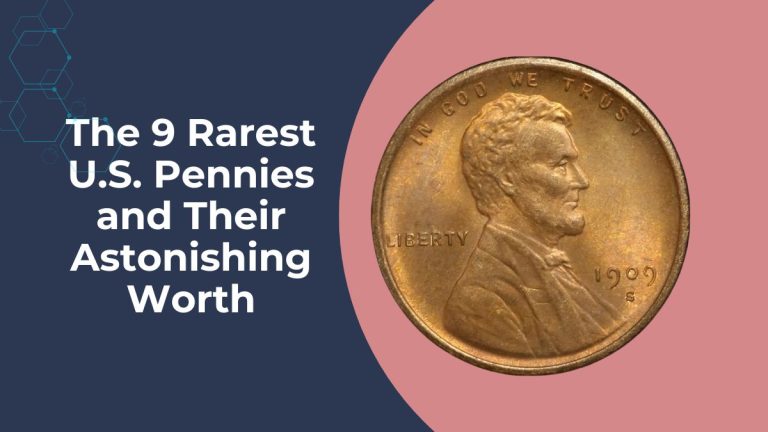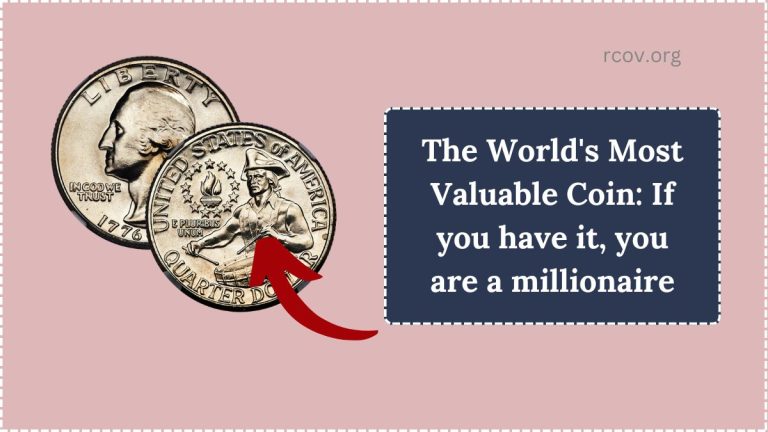The 1804 Draped Bust Dime stands as a pinnacle of numismatic rarity and allure, captivating collectors with its historical significance, limited mintage, and distinctive design variations. This coin not only represents a unique era in American coinage but also embodies the intricate artistry and evolving minting practices of the early 19th century.
Historical Context and Mintage
Minted exclusively in 1804, the Draped Bust Dime had a remarkably low production run of just 8,265 pieces. This limited mintage was the smallest for the dime denomination until the 1860s, making the 1804 issue exceptionally scarce.
The coin’s obverse features the Draped Bust design, attributed to engraver Robert Scot, depicting Liberty with flowing hair and draped clothing, a representation inspired by contemporary societal figures. The reverse showcases the Heraldic Eagle, a design that replaced the earlier Small Eagle motif in 1798, aligning with the nation’s growing sense of identity and symbolism.
Varieties: 13 Stars and 14 Stars Reverse
A distinctive feature of the 1804 Draped Bust Dime is the existence of two reverse varieties, differentiated by the number of stars above the eagle:
- 13 Stars Reverse (JR-1): This variety displays 13 stars, corresponding to the original thirteen colonies. It is rare, with PCGS certifying only nine examples, all in circulated condition. The finest known specimen is graded NGC MS63.
- 14 Stars Reverse (JR-2): This variety features an unexpected 14th star, an engraver’s error since the 14th state, Vermont, joined the Union more than a decade earlier. This variety is even rarer, with the finest example graded NGC MS63.
The addition of the 14th star remains a numismatic curiosity, reflecting the complexities and occasional inconsistencies in early U.S. minting practices.
Rarity and Market Value
The scarcity of the 1804 Draped Bust Dime, especially in higher grades, significantly elevates its desirability and market value. Recent auction results underscore this trend:
- An 1804 dime with pale, golden-brown toning and minimal wear sold for $632,000 at a Heritage Auctions event.
- Another example, noted for its exceptional preservation, fetched $372,000, highlighting the premium placed on coins with superior condition and eye appeal.
These figures illustrate the substantial investment potential and historical value attributed to this coin.
Key Details of the 1804 Draped Bust Dime
| Feature | Description |
|---|---|
| Mintage | 8,265 pieces |
| Design | Obverse: Draped Bust of Liberty Reverse: Heraldic Eagle |
| Varieties | 13 Stars Reverse (JR-1) 14 Stars Reverse (JR-2) |
| Composition | 89% Silver, 11% Copper |
| Diameter | 19 mm |
| Weight | 2.7 grams |
| Notable Auction Prices | $632,000 (Heritage Auctions) $372,000 (for an exceptional JR-4 variety) |
Collecting the 1804 Draped Bust Dime
For numismatists, acquiring an 1804 Draped Bust Dime is a significant achievement, often considered a hallmark of an advanced collection. Due to their rarity, especially in uncirculated grades, these dimes are highly sought after.
Collectors should be vigilant about the coin’s authenticity and provenance, as the high value of these dimes can attract counterfeits. Consulting reputable dealers and obtaining certification from recognized grading services are essential steps in the acquisition process.
The 1804 Draped Bust Dime encapsulates a fascinating chapter in early American coinage, distinguished by its limited mintage, intriguing design variations, and historical significance. Its rarity and the stories it carries make it a dream coin for collectors, symbolizing both the artistry and the evolving narrative of the United States during its formative years.
FAQs
Why is the 1804 Draped Bust Dime so rare?
The 1804 Draped Bust Dime had a mintage of only 8,265 pieces, the lowest for the dime denomination until the 1860s, contributing to its rarity.
What are the main varieties of the 1804 Draped Bust Dime?
There are two primary varieties: the 13 Stars Reverse (JR-1) and the 14 Stars Reverse (JR-2), distinguished by the number of stars above the eagle on the reverse side.
How does the number of stars affect the coin’s value?
Both varieties are rare, but the 14 Stars Reverse is considered more scarce and often commands a higher premium, especially in top conditions.

